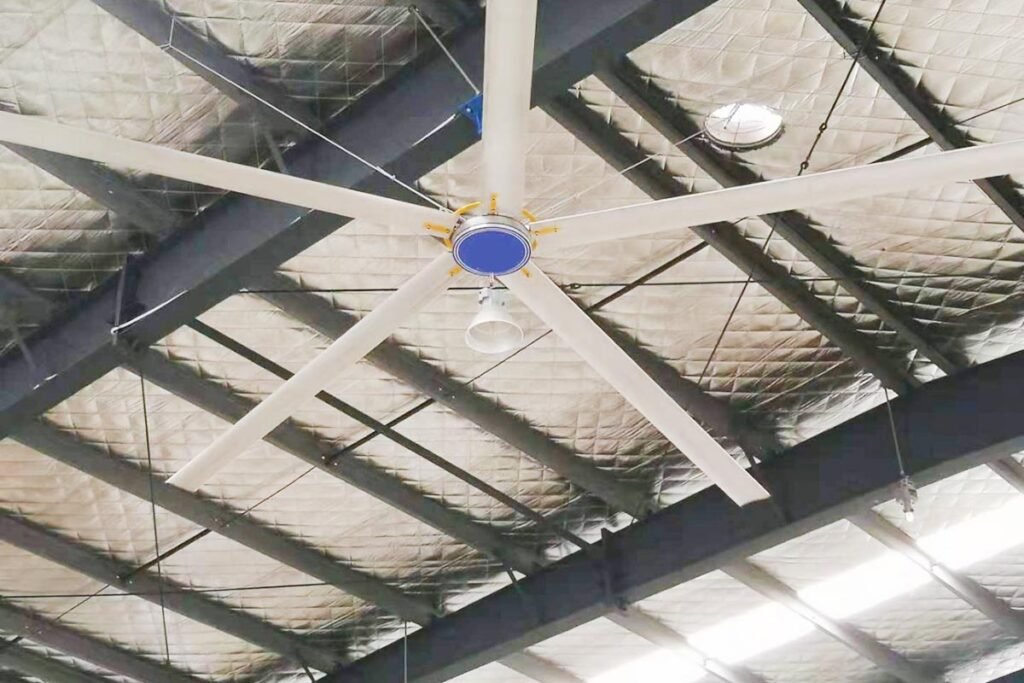
When installing HVLS (High Volume, Low Speed) fans, implementing appropriate safety measures is crucial to ensure the safety of personnel and equipment during the installation process and the operation of the fans. Here are some necessary safety measures:
1. Structural Safety Assessment
- Load-bearing Capacity: Before installation, ensure that the structure at the installation location can support the weight of the fan and the vibrations it generates during operation.
- Roof or Ceiling Inspection: Check for cracks, damage, or other structural issues on the roof or ceiling that could affect the safe installation of the fan.
2. Installation Height and Space
- Sufficient Installation Height: Ensure the fan is installed at a sufficient height to prevent the blades from contacting any obstacles when rotating.
- Safety Distance: The fan should be kept away from flammable items, mechanical equipment, and other objects that could pose a danger.
3. Electrical Safety
- Compliant Power Connection: Ensure the fan is connected to a power source that complies with electrical safety standards, and have the installation and wiring performed by a qualified electrician.
- Protection Measures: Use circuit breakers and ground fault protectors to prevent electrical faults and potential electrocution accidents.
4. Safety Protective Devices
- Protective Netting or Guardrails: Install protective netting or guardrails around the fan to prevent people or objects from entering the rotating area.
- Emergency Stop Switch: Install an easily accessible emergency stop switch to quickly cut power in case of an emergency.
5. Professional Installation and Training
- Professional Installation Team: Have the fan installed and commissioned by experienced professionals to ensure all safety measures are properly executed.
- Operator Training: Train operators on the操作方法 of the fan and the measures to take in emergency situations.
6. Regular Inspection and Maintenance
- Regular Inspections: Conduct regular safety inspections of the fan, including checking all fasteners, electrical connections, and the integrity of structural components.
- Maintenance Records: Keep records of maintenance activities and inspection results to track the performance and safety condition of the fan.
7. Compliance with Regulations and Standards
- Adherence to Local Regulations: Ensure the installation process complies with local building codes and safety standards.
- Follow Manufacturer Guidelines: Operate according to the installation guidelines provided by the fan manufacturer to ensure all installation steps are correct.
8. Environmental Safety
- Preventing Object Falls: During installation, ensure all tools and materials are securely fastened to prevent falls from heights.
- Adverse Weather Conditions: Avoid installation work during strong winds, heavy rain, or other adverse weather conditions.
By taking these safety measures, the safety risks associated with the installation of HVLS fans can be minimized, and the fans can operate stably and safely over the long term. Safety is always the primary consideration in industrial environments, so thorough planning and preparation should be undertaken before any installation work is carried out.
